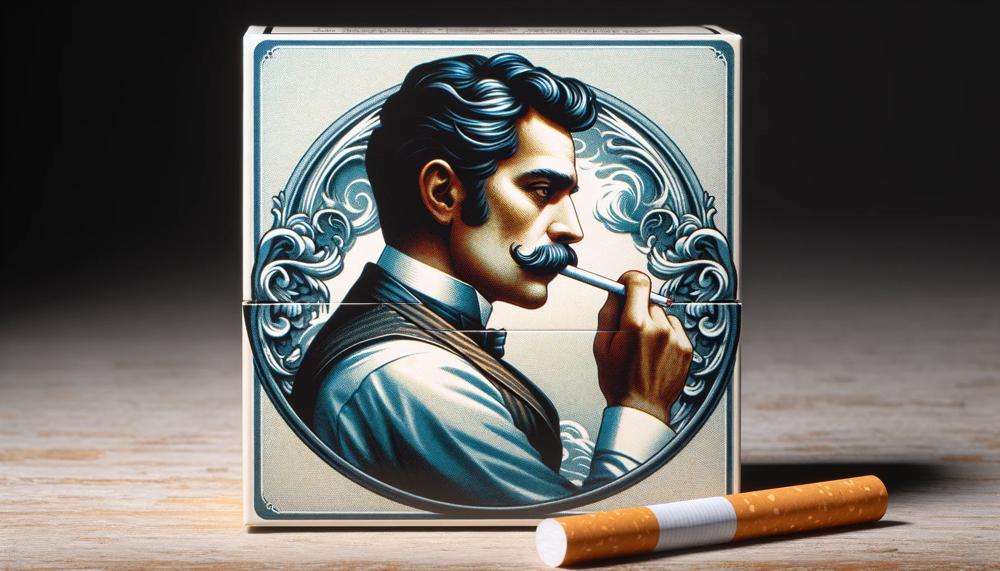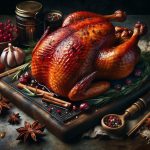As any pitmaster knows, the journey to perfect smoked meat is often riddled with challenges, the most notorious of which is the dreaded smoker stall.
We’re here to guide you through navigating and preventing this common pitfall, ensuring your smoking sessions are as smooth as your brisket is tender.
First, let’s understand the stall. It occurs when the internal temperature of the meat hits a plateau, often around 150°F to 170°F, making it seem like your cooking progress has hit a brick wall. This phenomenon, caused by evaporative cooling, can test the patience of even the most seasoned smokers.
So, how do you tackle the stall? Here are some bullet-proof strategies:
- Wrap it Up: Embrace the ‘Texas Crutch’ by wrapping your meat in butcher paper or aluminum foil. This method traps moisture and heat, speeding up the cooking process.
- Controlled Environment: Maintain a consistent temperature in your smoker. Fluctuations can exacerbate the stall.
- Humidity is Key: Use a water pan to keep the environment inside your smoker humid, reducing the rate of evaporation from the meat.
- Patience Pays: Sometimes, the best strategy is to simply wait it out. Ensure you’ve allotted enough time for the smoking process.
- Boost the Heat: Consider slightly increasing the smoker temperature to push through the stall, but be cautious not to overdo it.
By implementing these strategies, you’ll be well on your way to overcoming the smoker stall, ensuring each smoking session is a triumphant step towards barbecue mastery. Happy smoking.
Contents
- 1 Key Takeaways
- 2 How To Get Past The Stall and Speed Up The Cooking Process
- 3 The science behind the stall
- 4 A classic example of the stall when smoking meat
- 5 How long does the stall last?
- 6 Wrap the meat in foil to push through the stall
- 7 Raise the temperature of the smoker when the meat stalls
- 8 Cook at higher temperatures to avoid stalling
- 9 Just be patient and deal with the stall
- 10 Plan for the Stall
- 11 Cook overnight and sleep through the stall
- 12 Conclusion
Key Takeaways
To keep your smoker humming along without hitting a dreaded stall, you’ll want to focus on a few key tactics. It’s all about mastering the balance of temperature, spacing your meat right, picking your wood carefully, and keeping the wind and your fuel choice in check.
Here’s a rundown to ensure your BBQ stays on track:
| Factor | Why It Matters | What to Do |
| Temperature Control | Keeping a steady heat stops the smoker from cooling down unexpectedly. | Use a reliable thermometer, preheat your smoker, and adjust airflow as needed. |
| Meat Quantity | Too much meat can drop the temperature, causing a stall. | Space out your meat evenly and consider cooking in batches if needed. |
| Wood Type | Different woods burn at different rates, affecting temperature stability. | Opt for hardwoods like oak or applewood for a steady, consistent smoke. |
| Wind | Wind can cool your smoker, leading to temperature fluctuations. | Find a sheltered spot or use a windbreak to keep the heat steady. |
| Fuel Source | The type of fuel impacts the smoker’s temperature and ease of control. | Choose high-quality charcoal, wood pellets, or propane for reliable heat. |
A bit of foresight into these areas will keep your BBQ smoking right, without the hiccups that stalling brings. Remember, it’s not just about keeping the fire lit; it’s about managing how everything from the wind to the wood can impact your smoker’s climate.
How To Get Past The Stall and Speed Up The Cooking Process
Getting past the stall and speeding up the cooking process when smoking meat involves understanding and addressing the primary causes behind the stall. Here are practical tips for preventing and overcoming the stall, ensuring a delightful BBQ experience:
- Spritzing or Mopping: Keeping the meat’s surface moist can help counteract the cooling effect caused by evaporative cooling. Use a spritz or mop with apple juice, vinegar, beer, or water every 30 minutes to add flavor and moisture.
- Wrapping the Meat (Texas Crutch): Once your meat hits the 150-160°F mark, wrapping it in foil or butcher paper can help push through the stall by trapping moisture and heat. This method shortens cooking time while keeping the meat juicy.
- Increasing Smoker Temperature: If wrapping isn’t your preference, consider raising the temperature of your smoker slightly to overcome the stall. This accelerates cooking, though it may slightly alter the meat’s texture and crust.
- Patience is Virtue: Understand that the stall is a natural part of the smoking process, indicating that the meat’s collagen is breaking down. Trust your smoker and the process.
The science behind the stall
When you’re smoking a big piece of meat, like a brisket, there’s a moment that might test your patience—it’s called the stall. Imagine you’ve been checking your smoker, and suddenly, the meat’s temperature just won’t budge.
What Triggers the Stall?
The main villain behind the stall is evaporative cooling. As the meat heats up, moisture on its surface evaporates, stealing away heat and causing a temperature plateau.
It’s like when you sweat; the evaporation of sweat cools you down. This is exactly what happens to your meat in the smoker.
Strategies to Dodge the Stall
- Plan Ahead: Add a couple of extra hours to your cooking time. Knowing the stall is coming lets you stay cool as a cucumber.
- Wrap It Up: The ‘Texas Crutch’ method involves wrapping the meat in aluminium foil. This traps moisture, keeping the heat in and speeding up the cook. But, it might soften that bark you’re after.
- Butcher Paper Wrap: Unlike foil, pink butcher paper breathes a bit. It lets the smoke in while also holding in moisture, offering a balance between speed and texture.
- Change the Cooking Style: Before the stall hits, switch to sous-vide cooking. You’re keeping the temperature steady and waving goodbye to evaporative cooling.
- Ramp Up the Heat: Going hot and fast can sidestep the stall. But remember, it’s not a one-size-fits-all solution. Each meat has its own playbook.
A Handy Table to Visualize Your Options:
| Method | Pros | Cons |
| Texas Crutch (foil wrap) | Speeds up cooking | May soften bark |
| Butcher Paper Wrap | Retains some smoke flavor | Stall might still occur, just shorter |
| Sous-Vide Finish | Precise temperature control | Requires extra equipment |
| Hot and Fast Cooking | Prevents stall | Not suitable for all meats |
In short, the stall is all about moisture evaporation cooling down your meat.
A classic example of the stall when smoking meat
When you’re entrenched in the ritual of smoking meat, a phenomenon known as ‘the stall’ might catch you off-guard. Picture this: You’ve been maintaining a steady heat, your meat’s internal temperature climbs, but then, at about 150-160°F, it hits a plateau. It’s not just a pause; it’s a full-on stall. What’s happening here is a battle between heat and moisture.
| Temperature Range | Phenomenon | Effect on Meat |
| 150-160°F | Moisture Evaporation | Temperature Plateau |
| This is the critical phase where the meat’s surface moisture evaporates, cooling it down and causing the internal temperature to stall. | ||
- Wrap it Up: When your meat reaches that crucial 150-160°F range, wrapping it in foil or butcher paper can be a game-changer. This technique, often dubbed the ‘Texas crutch,’ traps the moisture, speeding up the cooking process.
- Turn Up the Heat: Consider nudging the temperature up a notch, say 25-50°F, during the stall. This can counteract the cooling effect caused by evaporation. Mind you, keep a keen eye; too much heat can play havoc with your meat’s texture.
- Choose Your Cut Wisely: Opt for cuts with a generous marbling of fat. These cuts, like a well-marbled brisket, naturally retain more moisture, reducing the likelihood of a severe stall.
Understanding the Stall: Why It’s Worth the Wait
While it may test your patience, the stall is a blessing in disguise. It’s during this slow dance that the tough connective tissues in the meat break down, transforming into succulent, tender bites. The stall, my friends, is where the magic happens in the world of BBQ.
How long does the stall last?
The stall, a curious and oft-misunderstood phenomenon in the world of BBQ, is akin to a rite of passage for the meat as it undergoes a transformation, wrapped in smoke and heat.
This plateau in the internal temperature of the meat, where time seems to stand still, typically spans from 1 to 3 hours for hefty cuts like briskets and pork shoulders.
For the smaller brethren, like ribs and chicken, it’s a brisker affair, lasting about 30 minutes to an hour.
Factors Influencing the Stall’s Duration:
| Factor | Effect on Stall Duration | Typical Impact |
| Type of Meat | More connective tissue = Longer stall | Brisket and Pork Shoulder: Long | Chicken and Ribs: Short |
| Meat’s Size/Shape | Larger/Thicker = Longer stall | Direct correlation with size |
| Cooking Temperature | Lower temps = Longer stall | Varies with smoker setting |
| Smoker Style | More humidity = Shorter stall | Water pan smokers fare better |
| Meat Moisture | More moisture = Longer stall | Marinated/Injected meats take longer |
| Weather | Hotter/Humid = Shorter stall | Depends on day’s weather |
| Opening Smoker | More peeks = Longer stall | Patience pays off |
Navigating the stall requires a blend of patience, understanding of these factors, and a touch of BBQ intuition.
Wrap the meat in foil to push through the stall
Wrapping meat in foil, colloquially known in the BBQ world as the “Texas Crutch,” is a savvy method to sidestep the infamous stall during smoking, ensuring your feast remains on schedule without sacrificing tenderness or moisture. Let’s carve through the details:
Why the Texas Crutch Works Wonders:
- Locks in Moisture: By enveloping your brisket or pork shoulder in a snug foil blanket, you’re essentially creating a mini steam room. This environment prevents moisture from bidding farewell, keeping your meat succulent.
- Battles the Stall: The stall, that maddening plateau where meat temperatures seem to freeze in time, meets its match with foil. The foil combats evaporative cooling, allowing internal meat temperatures to rise steadily.
- Speeds Up Cooking: Encased in foil, the meat basks in its juices and heat, cooking more efficiently. This means you’re back to being the hero at the dinner table sooner rather than later.
Timing is Key:
| Meat Type | Internal Temp for Wrapping | Expected Stall Time Without Foil |
| Pork Shoulder | 160-170°F | Up to 3 hours |
| Brisket | 160-170°F | 2-4 hours |
| Ribs | N/A (Wrap after 2-3 hours of smoke) | Varies |
Crafting the Perfect Wrap:
- Don’t Skimp on the Foil: Use a generous amount to ensure a complete seal, keeping those precious juices locked in.
- Monitor Temperatures: Use a reliable meat thermometer to identify the precise moment for wrapping.
- Rest Before Revealing: Once off the smoker and still wrapped, let your meat rest. This allows for redistribution of juices, ensuring every bite is as tender as the last.
Raise the temperature of the smoker when the meat stalls
Raising the temperature of the smoker when the meat stalls is a tactic akin to a seasoned pitmaster’s secret, turning a prolonged waiting game into a victory lap toward succulent, perfectly smoked meats.

When large cuts like pork shoulder or beef brisket hit what’s known as “the stall,” their internal temperature plateaus around 150°F, often for an exasperating duration, sometimes up to six hours.
This stall, primarily due to evaporative cooling, can test the patience of even the most dedicated BBQ aficionados.
Evaporative Cooling: The Culprit Behind the Stall
Evaporative cooling occurs as the meat’s moisture surfaces and evaporates, countering the smoker’s heat and stabilizing the meat’s temperature.
It’s a natural cooling process, much like sweating cools the human body.
The Strategy: Turn Up the Heat
To mitigate this, increasing the smoker’s temperature acts as a countermeasure to evaporative cooling, encouraging the internal temperature of the meat to resume its rise.
It’s a simple yet effective response to a challenge that every pitmaster will likely face.
Table: Overcoming the Stall – Why Raise the Temperature?
| Action | Reason | Benefit |
| Increase smoker temperature | Counteracts evaporative cooling | Resumes internal temperature rise |
| Shortens the stall duration | Makes the cooking process more predictable | Improves texture and moisture retention |
| Enhances bark formation | Higher heat catalyzes the Maillard reaction | Richer flavour and desirable crust |
Cook at higher temperatures to avoid stalling
Cooking at higher temperatures in a smoker brings a whole host of advantages, particularly when it comes to dodging the infamous stall.
Let’s break it down in a way that’s both insightful and straightforward, shedding light on how this technique not only saves time but also elevates the quality of your BBQ:
- Swift Cooking Time: Amping up the temperature cuts down on those hours spent waiting. Meat reaches its desired doneness quicker, making your smoking sessions more efficient and less of a day-long vigil.
- Averts the Stall: The stall, a BBQ enthusiast’s bugbear, is less likely at higher heats. This means a smoother, more predictable cooking process without unexpected plateaus in temperature.
- Safety First: High temperatures mean a quicker reach to those USDA-recommended internal temps, slashing the risk of unwanted microbes gatecrashing your BBQ.
- Crust and Flavor: Ever craved that perfect bark on your brisket? Higher heat achieves a delectable caramelization outside while keeping the inside tender, enhancing both texture and taste.
- Fuel Economy: Believe it or not, you’re actually being kinder to your wallet. Lower temps can devour fuel, as maintaining heat over extended periods is fuel-intensive. A hotter, quicker cook saves on those costs.
- Smokey Goodness: Higher temperatures generate more smoke, enveloping your meat in that irresistible smoky aroma and flavor that’s the hallmark of any great BBQ.
- Diverse Menu: With the ability to cook at varied temperatures, you’re not just limited to slow-cooked meats. Venture into smoking vegetables, fish, or even some desserts, broadening your BBQ horizons.
Just be patient and deal with the stall
To effectively deal with the stall when using a smoker, patience and strategy are paramount. Here’s how you can navigate this common pitfall and keep your BBQ on track:
| Technique | Benefit | Consideration |
| Consistent Temperature | Prevents moisture loss | Requires constant monitoring |
| Texas Crutch | Speeds up cooking | May soften bark |
| Patience | Ensures even cooking | Can prolong cooking time |
| Water Pan | Creates humid environment | Needs regular refilling |
By integrating these strategies, you can master the stall, ensuring your smoked meats are succulent and flavorsome.
Plan for the Stall
To prevent your smoker from stalling during the cooking process, it’s crucial to understand and manage several key factors.
| Aspect | Method | Reason |
| Steady Airflow | Check and adjust vents | Ensures continuous oxygen supply |
| Dry Fuel | Use kiln-dried wood/charcoal | Maximizes fire efficiency |
| Preheat Smoker | Allow to reach target temperature | Primes smoker for cooking |
| Fuel Monitoring | Regular checks and refills | Maintains consistent heat |
| Lid Management | Minimize opening | Prevents heat loss |
| Water Pan | Place near heat source | Adds moisture and stabilizes temperature |
| Digital Thermometer | Use for remote temperature checks | Reduces lid opening frequency |
| Load Management | Space food items adequately | Ensures even cooking and air flow |
These strategies, combining patience and precise management, are key in mastering the art of smoking and preventing stalls.
Remember, each smoker has its quirks; part of the journey is learning your equipment’s unique character.
Cook overnight and sleep through the stall
Cooking overnight in your smoker tackles the notorious stall, a phase where the meat’s internal temp hits a plateau, making you wonder if you’ll ever get to savour that juicy brisket.
This technique isn’t just about catching some z’s while your pork shoulder slowly transforms into a melt-in-your-mouth masterpiece.
It’s about outsmarting the stall and ensuring your BBQ is nothing short of legendary. Here’s the lowdown on how it does the magic:
- Steady Temperature Control: As the world dozes, your smoker maintains a constant, gentle heat. This steady warmth ensures the meat’s temperature rises without sudden spikes, sidestepping the stall.
- Moisture Management: Overnight, the low and slow approach lets the meat’s moisture do its thing, helping keep the temperature even. This equilibrium is your secret weapon against the stall.
- Collagen Conversion: In the still of the night, the long, slow heat works like a charm on the meat’s collagen, transforming it into gelatin at its own sweet pace. This breakdown is essential, and rushing it is like asking for a stall.
- Flavour Deepening: The true beauty of overnight smoking? It gives your meat ample time to soak up that smoky goodness, developing flavours that are both rich and complex.
Conclusion
To become an expert at smoking meats, one must comprehend and overcome a number of obstacles, chief among them being the smoker stall. This blog piece has shed light on the essential techniques and insights to assist you get beyond this barrier and guarantee that your barbecuing sessions produce outcomes that are tasty and succulent.
When meat temperatures plateau during smoking—often as a result of evaporative cooling—the stall, a frequent occurrence, occurs. The “Texas Crutch” approach of covering meat in foil or butcher paper, keeping smoker temperatures constant, and adding humidity with a water pan are some of the efficient ways to combat this. Every method works to offset the evaporation’s cooling impact, resulting in a more seamless cooking process.
Understanding the significance of elements like meat spacing, wood type, and temperature control—all of which contribute to minimizing temperature variations that may cause a stall—will help you further hone your strategy. Furthermore, experimenting with techniques like as raising the smoker’s temperature or just being patient may be quite helpful in handling this stage.
Even while it requires patience, the smoker stall is an essential step in the process because it breaks down strong connective tissues to produce delicate, flavorful meat.






